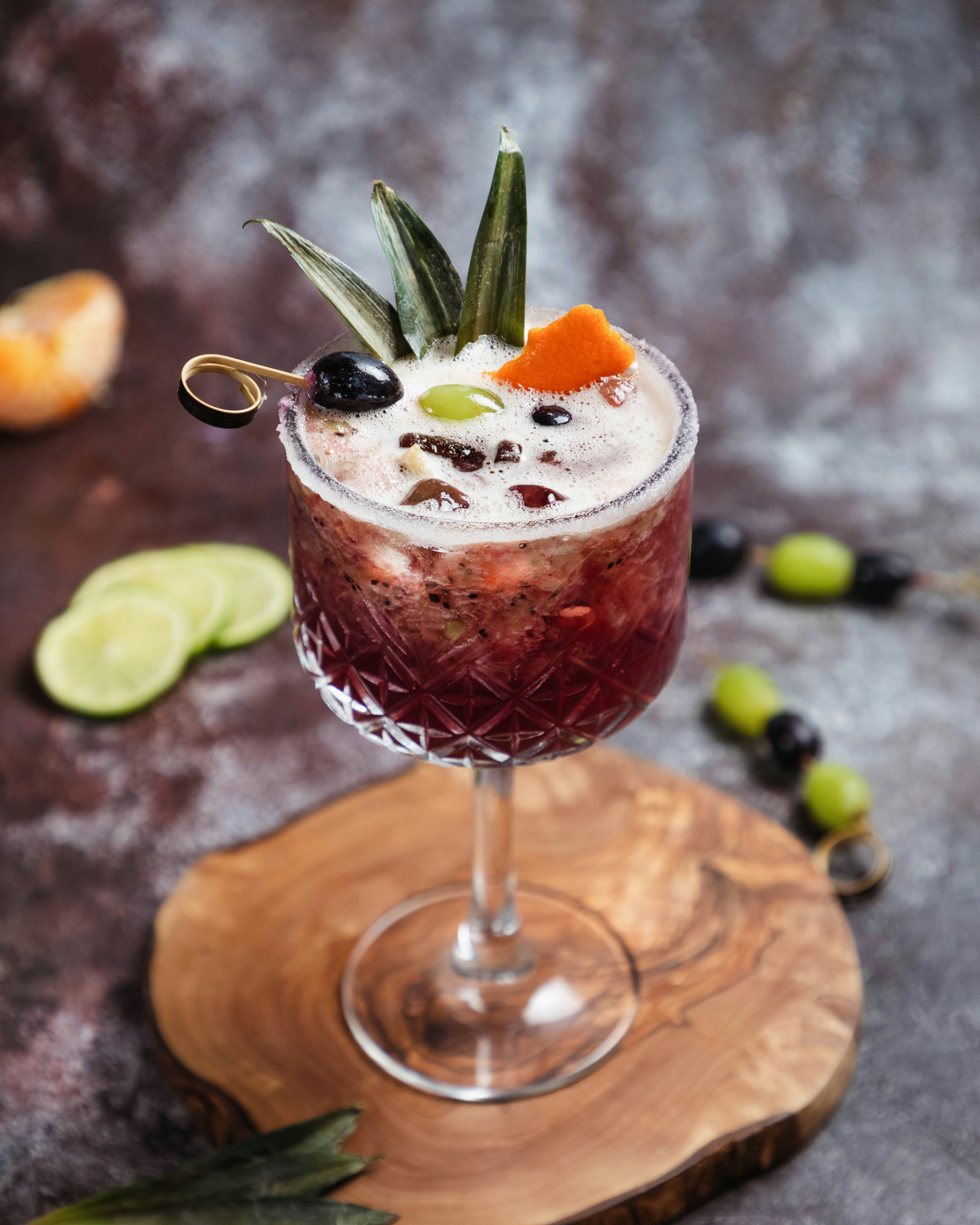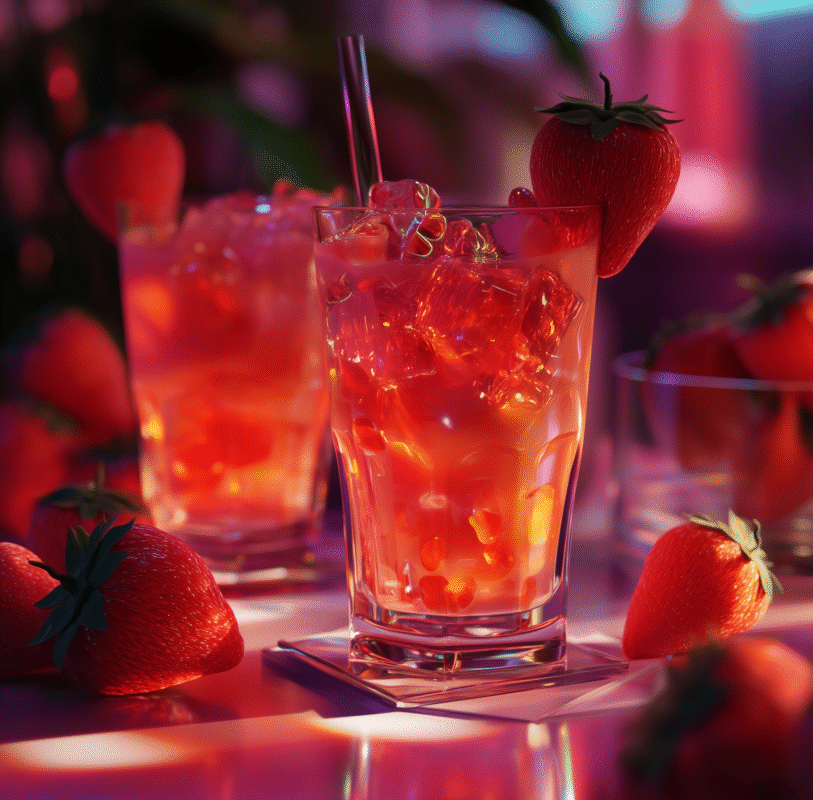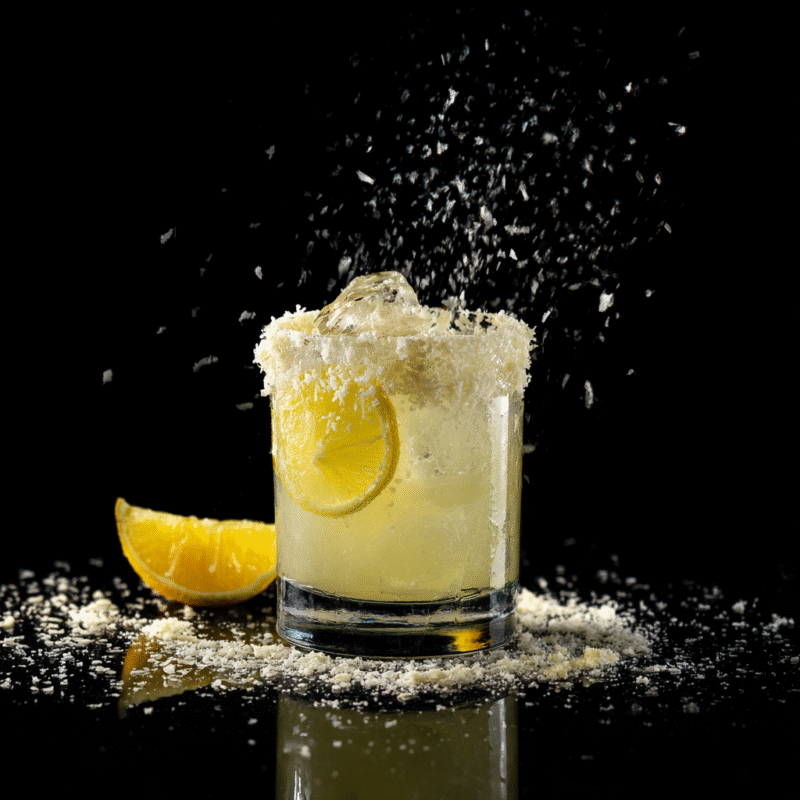Blog
Creative Cocktail Garnishing: Elevate Your Mixology Game

Introduction to Cocktail Garnishing
Cocktail garnishing is an essential aspect of mixology that transcends mere decoration, playing a significant role in enhancing the overall presentation and experience of a drink. A well-chosen garnish can transform a simple cocktail into a visually stunning work of art, making it appealing to the senses long before the first sip is taken. This added layer of sophistication not only attracts attention but also sets the tone for the drink’s flavor profile.
The importance of cocktail garnishing extends beyond aesthetics. One of its primary functions is to enhance the flavor of the cocktail itself. Fresh herbs, fruits, or even spices can add a subtle depth, providing each sip with an intricate complexity. For example, a sprig of mint can introduce a refreshing element to a mojito, while a twist of lemon peel might brighten the flavors in an old-fashioned. These garnishes, carefully selected, are not merely decorative; they serve a practical purpose, complementing and elevating the drink’s intended taste.
Furthermore, cocktail garnishes engage the senses in more ways than one. The vibrant colors and diverse textures can evoke curiosity and excitement, inviting guests to explore the drink further. Aroma plays a crucial role in tasting, and the inclusion of aromatic ingredients in garnishes can stimulate the olfactory senses, enhancing the overall drinking experience. The sight and smell of a well-garnished cocktail can evoke emotions and memories, making each drink not just a beverage but a multisensory experience.
In summary, cocktail garnishing is much more than a superficial addition to a drink; it is a vital component of the mixology experience that enhances flavor, engages the senses, and elevates the overall aesthetic appeal. As we delve deeper into the world of cocktail garnishing, we will explore various techniques and creative ideas to inspire both novice and experienced mixologists alike.
Essential Garnishing Tools
To achieve an exceptional presentation in mixology, utilizing the right garnishing tools is paramount. These tools not only enhance the aesthetics of your cocktails but also elevate the overall drinking experience. The following is a comprehensive overview of essential garnishing tools that every mixologist should consider incorporating into their toolkit.
First and foremost, a high-quality garnishing knife is indispensable. This knife is designed with a narrow blade that allows for precision cutting, making it easier to create intricate shapes from fruits and vegetables. Additionally, it is advisable to include a zester or a microplane in your arsenal, as these tools enable the extraction of zest from citrus fruits, adding both flavor and visual appeal to your cocktails.
Another essential tool is a peeler, particularly a channel knife, which allows for the creation of elegant spirals and curls from citrus peels. This tool can be employed to add flair to drinks, enhancing their visual impact. Furthermore, using tweezers can provide precision in adjusting and positioning garnishes without disturbing the drink itself.
In terms of decorative elements, cocktail picks are versatile tools that not only serve to hold garnishes in place but can also act as a stylish accent to the drink. Selecting unique and thematic picks can personalize cocktails further and make a lasting impression. Additionally, creative ice molds can add a distinctive touch to cocktails; using molds to shape ice into interesting forms can lead to an eye-catching presentation.
In conclusion, having the right tools is crucial for successful garnishing. Investing in quality garnishing knives, peelers, tweezers, decorative picks, and ice molds will significantly enhance your cocktail presentation and elevate your mixology skills. By integrating these tools into your routine, you can consistently produce visually captivating drinks that delight your guests.
Herbs and Greens: The Fresh Factor
In the realm of mixology, the choice of garnishes can significantly elevate a cocktail’s aesthetic and flavor profile. Fresh herbs and greens play a crucial role in this enhancement, providing vibrant visuals and aromatic elements that deepen the tasting experience. Popular herbs such as mint, basil, and rosemary are not only visually appealing but also contribute unique flavors that complement a variety of cocktails.
Mint is perhaps the most recognized herb in cocktail culture, frequently associated with classics like the Mojito and Mint Julep. Its bright green leaves offer a refreshing burst of flavor that balances well with sweeter components, such as rum or vodka. For optimal results, consider gently bruising the mint leaves before adding them to your drink. This technique releases essential oils, intensifying both aroma and flavor. Additionally, mint can be used as a vibrant garnish on top of crushed ice or along the rim of the glass, making the cocktail visually enticing.
Basil is another herb that should not be overlooked in cocktail garnishing. Its slightly sweet and peppery taste pairs beautifully with spirits like gin and tequila. A Basil Gimlet or a Basil Mojito showcases its versatility. When utilizing basil as a garnish, consider using the larger leaves strategically, allowing them to float atop the drink to create an aromatic experience for the drinker. Moreover, combining basil with complementary ingredients such as citrus can further enhance the flavor complexity, leading to a more enjoyable taste adventure.
Lastly, rosemary brings a distinct pine-like essence that can add depth to numerous cocktails. Its robust nature makes it a fantastic garnish for whiskey-based drinks, providing a fragrant counterpoint that enhances the overall experience. When using rosemary, consider creating a sprig garnish with a playful curve, or even lightly torching the leaves to release aromatic compounds further. These techniques provide a unique twist and bold presentation that captures attention.
Fruits: Beyond the Slice
Fruits play a significant role in cocktail garnishing, serving not just as flavor enhancers but also as visual appeal. While traditional slices and wedges add a familiar touch, there exists a plethora of creative techniques to elevate the presentation and taste of your cocktails. One innovative approach is the use of fruit caviar, a technique that involves creating small, spherical beads from fruit juices through a process called spherification. This technique allows mixologists to present a burst of flavor that complements the cocktail, transforming an ordinary drink into an extraordinary experience.
Another inspiring method is the incorporation of dehydrated fruit garnishes. Dehydrating fruits concentrates their flavors while allowing for unique textures that can captivate the attention of patrons. Fruits such as oranges, pineapples, or apples can be sliced thinly and dried, resulting in crisp, flavorful garnishes. These can be used to rim glasses or float atop a beverage, creating a stunning visual effect. Additionally, dehydrated fruits can be stored for extended periods, providing a practical solution for bartenders seeking to maintain a stock of garnishes while minimizing waste.
For those seeking to make an even bolder statement, frozen fruit spheres offer a visually arresting option. By freezing fruit juices or whole fruits in silicone molds, mixologists can craft stunning orbs that not only add aesthetic value but also enhance the drink as they melt, releasing flavors into the cocktail. Whether used as a garnish for a summer spritzer or a sophisticated martini, these frozen fruit spheres provide both taste and visual intrigue, stimulating the senses and prompting conversation among guests.
Exploring these innovative garnishing techniques can significantly enhance the cocktail experience, transforming standard drinks into memorable creations. It is essential for mixologists to experiment with various fruits and methods to find the perfect combination that will impress patrons and elevate their cocktail presentation.
Edible Flowers: Nature’s Décor
Edible flowers offer a vibrant and aromatic way to elevate the presentation and flavor of cocktails. These natural embellishments are not only visually appealing but also boast a range of taste profiles, making them a versatile addition to any mixologist’s toolkit. Some popular varieties of edible flowers include pansies, violets, nasturtiums, and hibiscus, each contributing unique flavors and colors. For instance, pansies have a mild, sweet flavor, while nasturtiums deliver a peppery kick, reminiscent of arugula. Incorporating these flowers into cocktails allows for a creative fusion of aesthetics and taste.
When using edible flowers, it is crucial to ensure they have been grown specifically for culinary use, free from pesticides and chemicals, to prevent any health risks. A thoughtful selection process helps ensure safety and enhances the overall drink experience. To incorporate these flowers effectively, consider using whole blossoms as a garnish on the rim of a glass or floating them delicately atop a cocktail. This not only creates an eye-catching presentation but also allows the delicate flavors of the flowers to infuse the drink gradually.
For those looking to add a touch of sophistication to their cocktails, consider creating floral-infused syrups or using edible petals as ice cubes. This practice not only enhances the visual appeal but also releases a subtle aroma and flavor as the ice melts. It is important to match the type of flower with the cocktail’s ingredients to ensure compatibility of flavors. For example, a floral gin and tonic may benefit from a garnish of lavender or chamomile, which complements the botanicals found in premium gins. With thoughtful pairing and presentation, edible flowers can transform an ordinary drink into a delightful and memorable experience.
Unique Rim Treatments
Innovative rim treatments are an excellent way to elevate the sensory experience of cocktails. By enhancing the cocktail’s presentation and flavor profile, these garnishing techniques not only delight the eyes but also tantalize the palate. Traditional salt or sugar rims can be enhanced with an array of flavors that complement the drink, transforming it into a unique tasting experience. Common alternatives include flavored salts, sugars infused with various fruits or herbs, and even spices that can provide a bold taste contrast.
One popular variation involves using flavored salts. A simple recipe can be created by mixing sea salt with citrus zests, such as lime or lemon, to create a zesty concoction that complements margaritas and other cocktails. Alternatively, combining salt with spices like smoked paprika or cayenne can add depth and an exciting twist to a rim. To prepare, simply blend your chosen salt with the flavoring in a shallow dish, making it easy to dip the glass rim before pouring your cocktail.
Flavored sugars are another innovative option for rim treatments, particularly for sweeter cocktails. Consider mixing granulated sugar with dehydrated fruit powder, such as raspberry or orange, to create a sweet rim that harmonizes beautifully with the drink’s flavors. To create a festive appearance, you may also incorporate edible glitter into your sugar mixture, providing a visual appeal that sets your cocktail apart.
Herbs can also be utilized for a unique twist, by mixing minced fresh herbs such as mint or basil with sugar or salt. This infuses a fresh aroma that enhances the sipping experience. Ultimately, these creative rim treatments transform your cocktails into striking and flavorful creations, providing an exciting prelude to the pleasure of each sip. As mixologists explore these options, the potential for flavor innovation continues to grow, leading to a captivating drinking experience.
The Art of Garnishing Techniques
Garnishing is a crucial aspect of cocktail preparation, serving not only as a visual enhancement but also as a means to elevate the overall sensory experience. The techniques employed in garnishing can dramatically alter the cocktail’s presentation and flavor profile. One of the most common methods is twisting citrus peels, which involves using a peeler or knife to remove a thin strip of peel from fruits such as oranges, lemons, or limes. By twisting the peel over the cocktail before placing it in the drink, the citrus oils are released, adding an aromatic element that complements the cocktail’s taste.
Another notable technique is fruit carving, where fresh fruits are intricately shaped to create visually stunning garnishes. This might include simple fan designs from apples or elaborate floral shapes from watermelons. Carving not only adds aesthetic appeal but also allows mixologists to showcase their skill, making the drink more appealing to patrons. The tactile nature of carved garnishes can also enhance the cocktail drinking experience, as patrons often engage with the garnish during the enjoyment of the drink.
Creating spiced torches is another innovative technique that introduces both a unique visual element and additional flavor profiles. This involves infusing a herb or a spice, such as rosemary or cinnamon, into a cocktail garnish and then igniting it, creating an impressive visual presentation and emitting aromatic smoke. This technique can enhance the cocktail’s flavor, contributing warmth through the aromatic profiles that are released when the garnish is ignited.
Lastly, layering garnishes can create a more complex visual and textural experience. By thoughtfully stacking various garnishes such as herbs, fruits, and edible flowers, mixologists can elevate the cocktail’s appearance and aroma. Layered garnishes not only provide visual depth but also invite patrons to explore various flavors and textures with each sip. Mastering these garnishing techniques is essential for any mixologist aiming to enhance their cocktail’s aesthetic and sensory appeal.
Seasonal Garnishing Ideas
Incorporating seasonal elements into cocktail garnishing is an excellent way to enhance the visual appeal and thematic relevance of your drinks. By utilizing seasonal produce and decorative elements, mixologists can create cocktails that not only taste great but also resonate with the nuances of each time of year.
During spring, fresh herbs and vibrant fruits are at the forefront of garnishing options. Greenery such as mint, basil, or rosemary adds vibrant color and aromatic qualities. For fruit, consider using delicate elderflowers or refreshing citrus like oranges and grapefruits. An appealing garnish could be a sprig of mint paired with a lemon wheel, evoking the essence of spring’s renewal.
As summer approaches, the focus shifts to juicy, ripe fruits that offer refreshing flavors. Berries, such as strawberries, blueberries, and raspberries, provide not only color but also natural sweetness that can complement various cocktails. Additionally, tropical fruits like pineapple and mango can be utilized for a vibrant summer cocktail. Think of a cocktail adorned with a skewer of mixed berries or a small slice of watermelon for a festive touch.
In fall, earthy tones and flavors come into play. Utilize ingredients such as apples, pears, and pomegranates, which resonate with the season’s harvest. Cinnamon sticks and star anise are also perfect for adding warmth and spice to cocktails. A beautifully garnished drink could include an apple slice with a dash of cinnamon or a pomegranate seed sprinkle over the cocktail’s surface, reflecting the rich autumn colors.
Finally, winter garnishes can create a cozy atmosphere during festive gatherings. Consider using evergreen sprigs, cranberries, and even ornaments or edible glitter for a sparkle effect. A cocktail garnished with fresh cranberries and a sprig of pine can evoke a seasonal holiday spirit, making the drink more inviting. By creatively incorporating the essence of each season, mixologists can elevate their cocktail presentation and create memorable experiences for their guests.
Mix and Match: Creating Your Signature Garnishes
Creating signature cocktail garnishes offers a unique way to elevate your mixology skills and provide a personalized touch to your beverages. The process begins with understanding the importance of flavor pairing and visual appeal. By mixing and matching various garnishing techniques and ingredients, you can develop distinctive garnishes that both enhance the drinking experience and showcase your creativity.
To begin, consider the ingredients in your cocktail and the flavors they present. For example, a citrusy cocktail can benefit from a fresh herb garnish like mint or basil, which not only complements the flavors but also adds an aromatic quality. Conversely, deeper, rich cocktails may pair well with dried fruits or even a charred citrus wheel for added visual interest and a sophisticated touch. Experimenting with different textures—crispy, smooth, or juicy—can also play a critical role in enhancing the overall drinking experience.
Visual harmony is paramount in cocktail garnishing. When creating your signature garnishes, think about the color palette and shape of your ingredients. Aim for contrasts and complements; for instance, pairing a vibrant orange peel with a dark, rich cocktail can create an eye-catching focal point. Additionally, consider incorporating edible flowers or microgreens to introduce subtle beauty and freshness into your presentation.
Testing your combinations is essential to refining your garnishing skills. Start by creating small batches of cocktails with different garnishes and then observe which combinations resonate best with your audience. Gathering feedback can help you identify not just what looks appealing but also what flavors are most satisfying. As you begin to mix and match, take notes on what works well so you can develop a repertoire of signature garnishes that define your style and leave a lasting impression on your guests.









